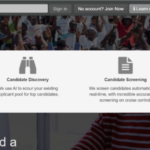There’s a lot of
What is Artificial Intelligence?
Technology moves at breakneck speed. And we now have more power in our pockets than we had in our homes in the 1990s. Artificial intelligence (AI) has been a fascinating concept of science fiction for decades. But many researchers think we’re finally getting close to making AI a reality. It is a branch of computer science that aims to create intelligent machines. It has become an essential part of the technology industry. NPR notes that in the last few years, scientists have made breakthroughs in “machine learning,” using neural networks. Which mimic the processes of real neurons.
Artificial intelligence has the potential to offer $15.7 trillion to the global economy by 2030. We already encounter it every day. Think of all those times Amazon recommended a book to us or Netflix suggested a film or TV show. Those recommendations are based on algorithms that examine what we’ve bought or watched. The algorithms learn from those purchases, using them to suggest other things you might enjoy. Artificial intelligence lies behind those algorithms.
Inventions like automated chatbots and recommendation engine virtual assistants are becoming a critical part of business empowerment. At the same time, machines are taking
Common Misconceptions About Artificial Intelligence
There are many common misconceptions when it comes to AI. Much of that has to do with things being labeled as artificial intelligence when they actually aren’t. Without a strong understanding of the technology involved, people are left to believe marketers that AI is in nearly everything. AI also doesn’t have to be an android or robot. When many people think of AI, they think of robots who will replace human jobs. This isn’t necessarily true. Yes, robots and other machines may use AI, but AI itself is much greater. It is the software and brains of the machine instead of just the machine itself.
Machine learning models are not inherently ‘dangerous’. In fact, they possess the same level of danger as any other technology already present in our lives. Most AI-systems can still only follow instructions, such as solving a specific problem or
How it Can Help You?
As technological advancements continue, AI’s plays important role in our daily lives. There are even concerns that AI will soon make most human-filled jobs obsolete and ultimately leave millions unemployed. And according to the National Science and Technology Council’s Subcommittee on Machine Learning and Artificial Intelligence, these concerns are not entirely unfounded. In a report put together for the previous U.S. administration, the subcommittee suggests that up to 47% of jobs risk becoming irrelevant because of technological advancement and that 83% of jobs that pay under $20 an hour will most likely be automated within the next few years.
Due to modern technology in A.I, every thing has been much easier.
It can someones lives by predicting suicide. Let me clear you on this topic. At Florida State University Florida State University, “machine learning can predict with 80–90 percent accuracy whether someone will attempt suicide as far off as two years into the future. The algorithms become even more accurate as a person’s suicide attempt gets closer. For example, the accuracy climbs to 92 percent one week before a suicide attempt when artificial intelligence focuses on general hospital patients.” And heart failure: “By tracking the movement of 30,000 different points on a patient’s heart, it was able to construct an intricate 3D scan of the organ. Combining these models with patient health records going back eight years, the system could learn which abnormalities signaled a patient’s approaching death, making predictions about five years into the future.”
Not only this AI, automation and machine learning will impact day-to-day tasks considerably in the next five years. It will enable companies to develop even deeper relationships with people. By using chatbots for automated customer support will save a lot of time.This is all possible due to A.I.



